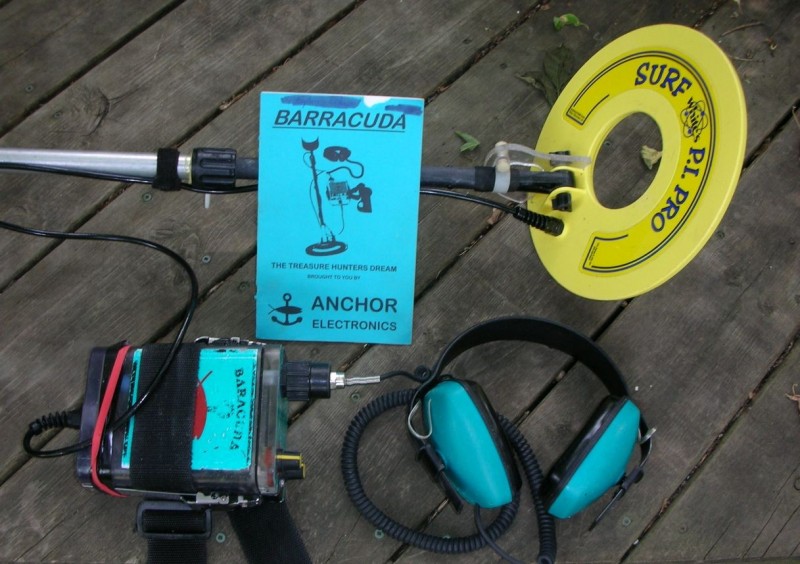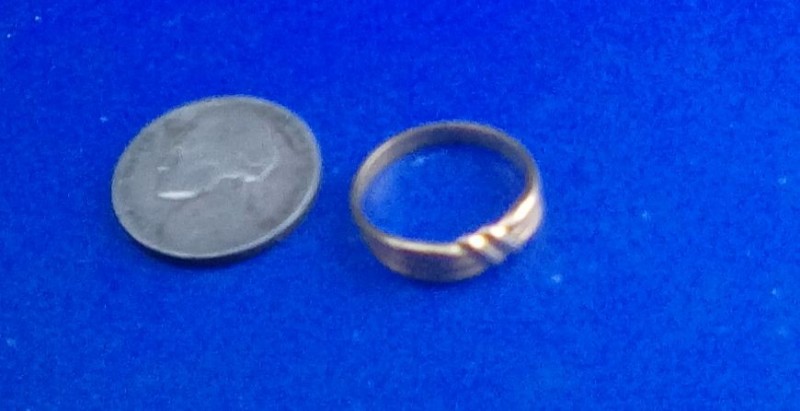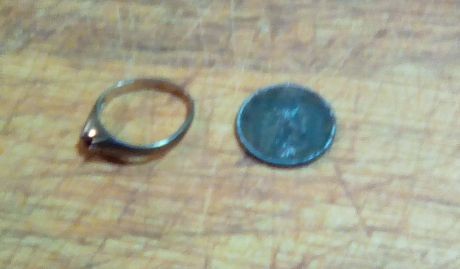-
Posts
514 -
Joined
-
Last visited
Content Type
Forums
Detector Prospector Home
Detector Database
Downloads
Everything posted by cjc
-

AQ Starting To Make Some Sense
cjc replied to tvr's topic in First Texas - Bounty Hunter, Fisher & Teknetics
Thats the NOX's problem. Overprocessed. Would be an insane first machine to learn. Can't tell the flyspecks from the garbage can lids. cjc -

AQ Starting To Make Some Sense
cjc replied to tvr's topic in First Texas - Bounty Hunter, Fisher & Teknetics
Dare I mention these two in the same breath but with both the AQ and the Equnox--once you begin to hear the really "bitty" responses--and learn to use the coil to check for consistency--your accuracy takes a quantium leap. Both have a lot of juice and it tends to surround these little pins and foils to make them sound fuller and more solid than they are. In either instance--listening for a peaked sound is important--indicating something that is really standing out from the surrounding ground. cjc -

Mid-depth Interference Fix?
cjc replied to cjc's topic in First Texas - Bounty Hunter, Fisher & Teknetics
flex seal is just thick rubber. just a try at reducing the interference--or at least localize it to the coil connnector. c -
Joe Demarco makes a great set of phones--solid build, and unlike most of the others they can be heard underwater. Worth every penny--being able to hear in 8' of water has gotten me a lot of gold. cjc
-

Mid-depth Interference Fix?
cjc replied to cjc's topic in First Texas - Bounty Hunter, Fisher & Teknetics
nice product but does it provide shielding? I think the thickest product will be best--or layers. Have not determined that it even works yet--just seemed to mute wave noise in fresh water. Might have just been slow water that day... c -

Mid-depth Interference Fix?
cjc replied to cjc's topic in First Texas - Bounty Hunter, Fisher & Teknetics
seemed to help in fresh. flex seal is just one of many things that could be tried. even sheidling foil sealed well might work. its the rubberized that has to be cut off. c -
One layer rubberized and an outer layer of "Flex Seal". First trial in fresh water with just the rubberized seemed to mute the mid-depth interference. Made the noise easier to tune out--not such sharp reports from waves passing. Would like to hear back on some salt trials. cjc
-

Gigmaster With The AQ
cjc replied to vive equinox's topic in First Texas - Bounty Hunter, Fisher & Teknetics
This takes time and practice. There are pulse machines without tone ID that can all but ID iron as well--you could say that the AQ gives you quite a bit more to work with--and learn. cjc -

Gigmaster With The AQ
cjc replied to vive equinox's topic in First Texas - Bounty Hunter, Fisher & Teknetics
That's well said, Joe--physics does part of the work for an experienced pulse hunter. Probably the most important thing with these super high Gain VLF's as well--just to know the signal strenght and to learn to place your targets in context. Keeps you off the micros and too big targets at depth. cjc -

Fisher Headphones For Impulse AQ
cjc replied to jimpugh's topic in First Texas - Bounty Hunter, Fisher & Teknetics
Thanks for your reply, Joe. I did notice that the TE's had a lot of harmonic range--(on the Equinox) thought for sure they would bring out those faints on the AQ. That's a very ineresting material to use in your "Skullies"--if you ever do want to sell a pair...my MGM buzzer build with the take out plastic covers came out kind of "rattley" lol... cjc -

Fisher Headphones For Impulse AQ
cjc replied to jimpugh's topic in First Texas - Bounty Hunter, Fisher & Teknetics
Can't help wondering what a set of Tony E's would do this machine has such an interesting faint range. cjc -

Met Up With An Old Friend
cjc replied to jimpugh's topic in First Texas - Bounty Hunter, Fisher & Teknetics
CZ epic beach machine still have mine and run it all the time. Phones jack went this year--broke my heart its in TX now. This was my first real high performance machine--the world opened up and gold and silver poured out! cjc -
In any of the modes you are listening for narrow responses with clean "sides". Just easier to hear in mute. cjc
-
I would add to that --try working in Mute mode to get the hang of the target sounds with no extraneous sounds. Maybe not as deep but a lot easier to tune and hear. I got a 3.7gr. 22k ring at 18" + in Mute--very clean, narrow and distinct signal. cjc
-
Ya with a pulse with this much juice--you need to have your basics down--I sure do! Its kind of like what I see with the sensitivity of the Equinox--everyone wants to run first and they pay a huge price in frustration. That book will teach you a lot of what you need to know. cjc
-
TVR this a machine with unique operating characteristics. I fell into trying to run the juice way up and didn't find that it gave much of an advantage. It did make for a more confounded and jumpy signal that was harder to interpret. As well, where there was current or the "wrong" depth of water, the sound offs were harder to deal with. I would suggest getting the hang of the AQ down at preset or even lower. I would also suggest staying off the very low Delay settings--to better hear the pins and micros. Listen to the "sides" of your responses--this is what will keep you off the rusted bits . As with a lot of pulse machines--the "ears" will be easier to learn at low Gain levels. This is a rare example of a machine that does not need to be "turned up." Good Luck, clive
-
Kind of what I was up against here--and I was surprised to see the machine chattering in the current with the brain 18" above the surface. Still performed turned down though --below 4, T/H down (learned that from Eric) and in Mute. Just found Tone too "warbly". This machine sounds very different in the water--was initially concerned that it didn't have any wide / narrow to ID the caps--not true at all. Theres a bit more to it than that having to do with how peaked the tone is, but the potential is there. Get the sense that black sand is where this machine will shine--just like the legendary Cuda--a black sand/ hills / contours / fast salt monster. cjc
-
Quite impressed with the machine on this one it was chattery in close to shore with the waves so I went to Mute and got this still very deep--18" range and still pretty loud. (3.7 gr.) Good "sides" were a clue to dig this one amongst the caps and pins. (Something I've learned from the GQA2, CS6PI and TDI Pro. I know that with more practice this machine has the potential to be a very accurate pulse (there is such a thing...). cjc
-
Thanks for your kind review, Renagade Arts. I had some great mentors when I was starting in the hobby and to see a few guys have those same "Eureka" moments is what keeps me pecking away at the console and jotting notes on gas receipts. Hope that that accuracy brings you some big finds. Good Luck Detecting, clive
-
The idea behind my books is to give people the basic skills and detector knowledge to get results with any detector. I then look at how these skills apply to what the Equinox does well. Thanks for your interest. http://www.clivesgoldpage.com/shop/publications/minelab-equinox-beginner-advanced/#reviews http://www.clivesgoldpage.com/shop/publications/skill-building-with-the-minelab-equinox-series-metal-detectors/#reviews cjc
-

17.69 Gram AQ Gold 1942 Class Ring
cjc replied to Joe Beechnut OBN's topic in Metal Detecting For Jewelry
What a coincidence, Joe--I did a hunt that was pretty much the same--big gold and a silver dime. (Give or take 16 grams...). Quite proud of this one actually in that it was a hairpin sized signal--("ya learn kid, but'cha learn slow...)." That is such an awesome find--some real weight. Thanks for the settings too. Jumping between the modes seems to help with the pins ID, also what I'm learning is that like all of Eric's machines the "sides" are critical information--where you have that nice "whoop" upswing / downswing--good sign. Had the CS6PI out after (2 hours of AQ --waa--no night before top up), and this machine has very similar audio--maybe a bit better in that clean edges always mean no steel. The potential of the AQ is certainly there, and a few things that Jim mentioned to me about the low uSC ranges "vibrating or "exciting" the ground deeper made the faint range easier to understand, target acquire and respond to. I've had to really focus on my coil control and pulse basics with this detector and would (objectively) recommend that anyone new to pulse hunting read my book "Pulsepower" to get a handle on some of these (...always be closing...). With the Cuda, keeping the threshold (tuner) low makes a huge difference in how pins and caps sound--with even a tiny decrease changing the information a lot. This worked really well today with the AQ-kept me off these and on just the small foils and solid bits. Loose the pins and caps and this detector looks better every day. Good Luck, Congrats, clive -

It Was Only A Matter Of Time
cjc replied to The Seeker's topic in First Texas - Bounty Hunter, Fisher & Teknetics
ya, the back 1/3rd of this machine is really faint needs that slow slow to hear the deepest ones but they are really way down--object of the game. cjc





